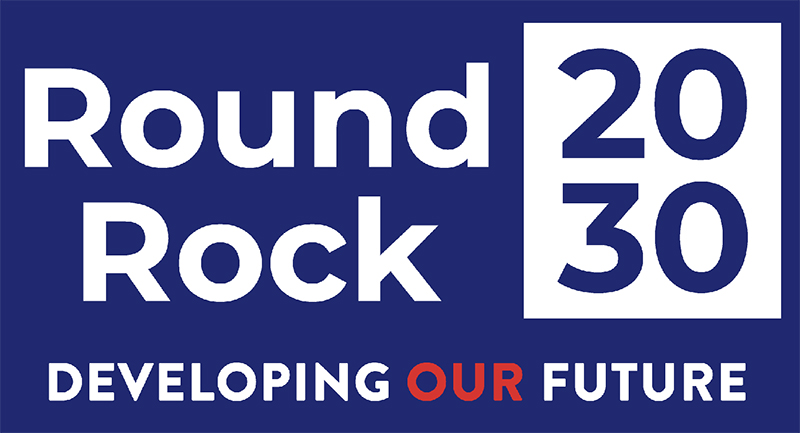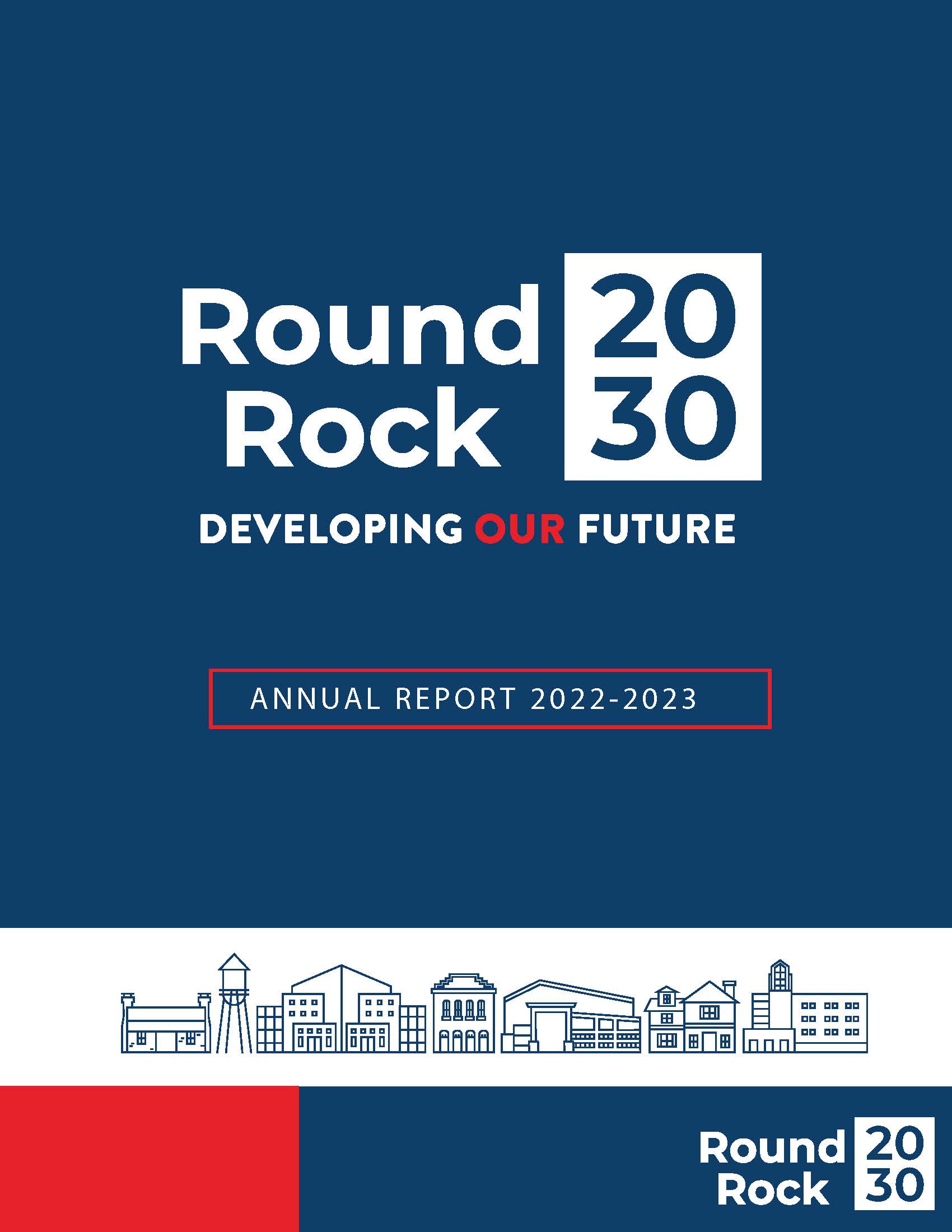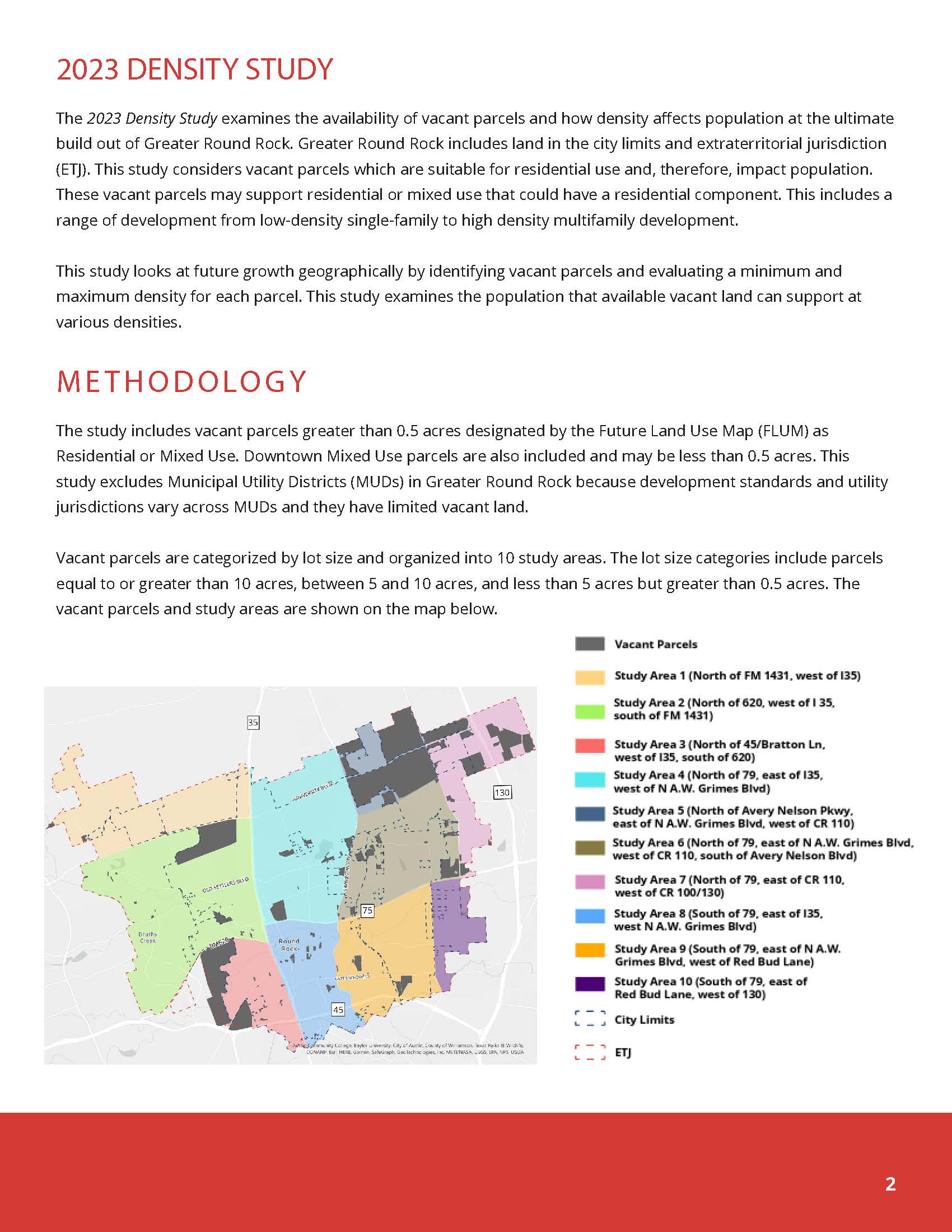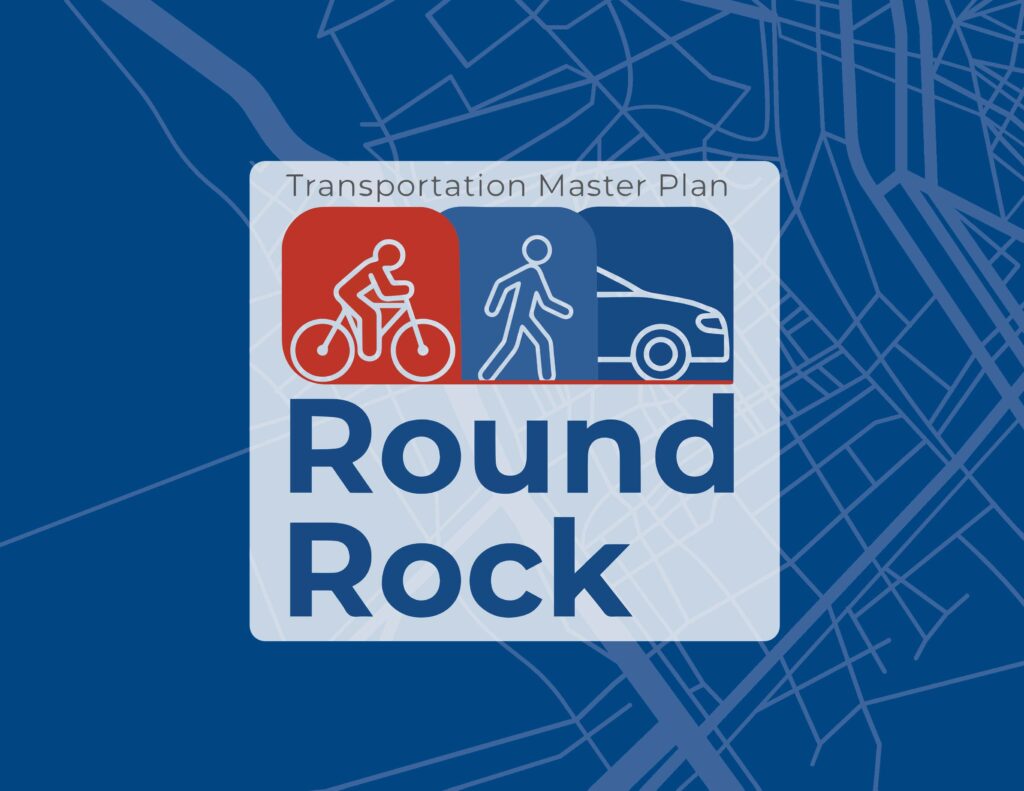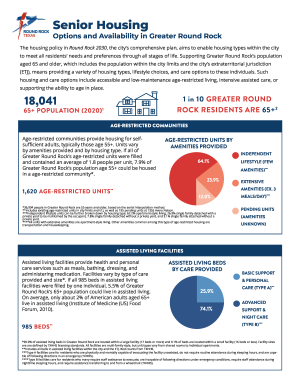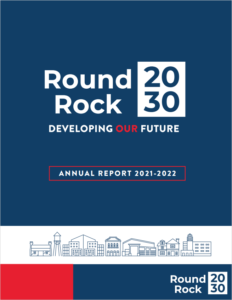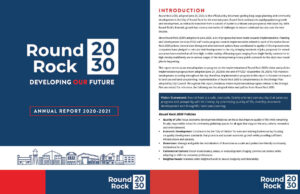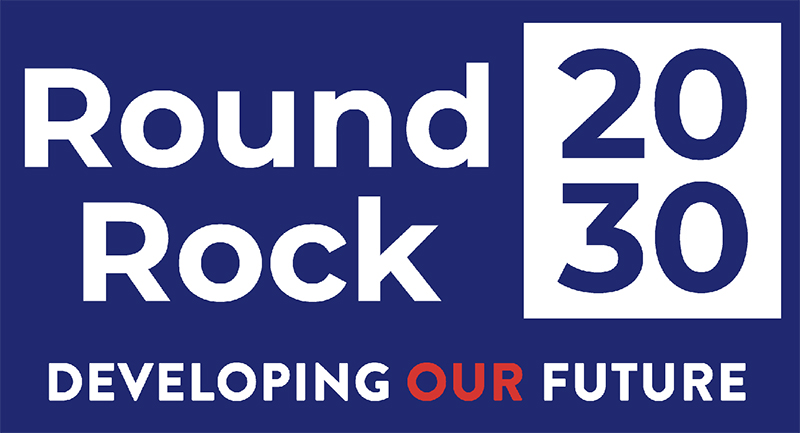NEWS AND UPDATES
NEWS AND UPDATES
News and Updates
November 17, 2023
The Round Rock 2030 Annual Report for 2022-2023 was presented to City Council on November 16, 2023, by Brad Wiseman, the City’s Director of Planning and Development Services (PDS).
Adopted in June 2020, Round Rock 2030, the City’s comprehensive plan, has guided notable advancements in Round Rock’s growth and infrastructure development. Wiseman’s presentation highlighted the strategic steps taken by the City in line with its long-term vision.
Round Rock 2030 includes a vision statement and 12 guiding policies, each with specific implementation strategies. The Annual Report highlights progress made toward these implementation strategies during FY 2023 from October 1, 2022, through September 30, 2023.
The Annual Report also includes new data prepared by PDS to inform future land use planning. This year, PDS conducted the 2023 Density Study analyzing growth in specific areas, evaluating vacant land availability and different density scenarios to prepare for the City’s future population distribution and development plans. The 2023 Density Study is included as an insert to the Annual Report.
The Round Rock 2030 Annual Report for 2022-2023 is now available for download.
November 17, 2023
The 2023 Density Study, conducted by Planning and Development Services (PDS) staff, is available to download. This study marks the first time PDS has examined projected growth by specific study area rather than city wide or project-based.
The 2023 Density Study analyzes vacant parcels in 10 study areas that make up Greater Round Rock, which includes the city limits and extraterritorial jurisdiction (ETJ), to see how density will impact population growth. This study considers vacant parcels greater than 0.5 acres which are suitable for residential use of all configurations including the residential component of mixed-use. The analysis excludes developed Planned Unit Developments (PUDs) and Municipal Utility Districts (MUDs).
Density assumptions were derived from existing developments to test density scenarios across vacant parcels. Development potential was evaluated using Round Rock 2030 location criteria and development standards for undeveloped PUDs. Location criteria utilizes lot size, road type, and proximity to other land uses to determine the appropriateness of new land uses. Based on the evaluation, each vacant parcel was assigned a low-density assumption and high-density assumption. The vacant acreage was multiplied by the corresponding density assumption to calculate the potential future units added in the low-density scenario and the high-density scenario.
The study found that should all the vacant parcels in Round Rock suitable for residential use be developed at their lowest density assumptions, 25,633 units could be constructed. Assuming an average of 2.61 people per household, this could mean a population increase of approximately 67,000. Alternatively, should the same parcels develop at their highest density assumptions, 143,114 units could be added, over five times the amount in the low-density scenario. Note that the 2.61 population multiplier is based on the mixture of housing units in Round Rock in 2020. As the number of high-density projects increases, the average household size may decrease resulting in a lower total population.
The 2023 Density Study presents two extreme scenarios of Greater Round Rock density. In reality, vacant land will develop with a range of uses and densities. As Greater Round Rock continues to grow, it is important to be mindful of how new development fits into the larger plan for build out. Moving forward, data from this study can be adjusted to evaluate proposed changes in density by study area.
October 12, 2023
The Round Rock City Council unanimously approved an update of the Transportation Master Plan (TMP) on October 12, 2023. The TMP is a long-term planning document that will guide funding decisions as the City continues to experience growth and development over the next three decades. The plan focuses on prioritizing high-priority intersections, safety enhancements and major roadway and trail projects. The updated TMP builds on the City’s strategic goals and past planning efforts, aligning transportation needs and recommendations with other City and regional planning efforts.
All the recommendations included in the TMP were developed in concert with the City’s policies and vision established in Round Rock 2030, the City’s comprehensive plan, ensuring a coherent and unified approach to addressing the transportation demands of population, employment, and economic growth.
The City of Round Rock remains committed to enhancing the quality of life for its residents through strategic planning and investment in transportation infrastructure, ensuring a sustainable and connected future for all.
August 14, 2023
The report, Senior Housing: Options and Availability in Greater Round Rock, has been released. The report totals the number of existing and pending units in Age-Restricted Communities, Assisted Living Facilities, and Nursing Facilities compared to the size of Greater Round Rock’s 55+ and 65+ population.
November 17, 2022
The Round Rock 2030 Annual Report for 2021-2022 is now available for download. This report serves as an annual update on progress on the implementation of Round Rock 2030’s vision and policies. Implementation progress from FY2022 (October 1, 2021 – September 30, 2022).
The Annual Report was presented to City Council on November 17, 2022. The presentation video is available on Round Rock Replay.
August 23, 2022
The city has released 2020-2040 Round Rock Population Projections. The City’s Planning and Development Services Department (PDS) developed population projections for the 20-year period for the area within the City Limits and for Greater Round Rock. Greater Round Rock includes the city limits population and the population of Round Rock’s Extra-Territorial Jurisdiction, including Municipal Utility Districts.
The 2020 Census was used as the base year for the city limits. Census tract boundaries outside of the city limits do not correspond exactly to the Greater Round Rock limits; therefore, the city created a 2020 Greater Round Rock population estimate utilizing GIS to determine which portions of Census tracts should be included in the boundary.
PDS released the 2020-2040 Population Projections Report which outlines projection methodology and assumptions. The data projects significant population growth over the next twenty years.
This population growth will result from projects that are currently being developed future development of vacant land in compliance with the City’s adopted Future Land Use Map in its comprehensive plan, Round Rock 2030, and potential redevelopment resulting in increased residential density and/or mixed-use.
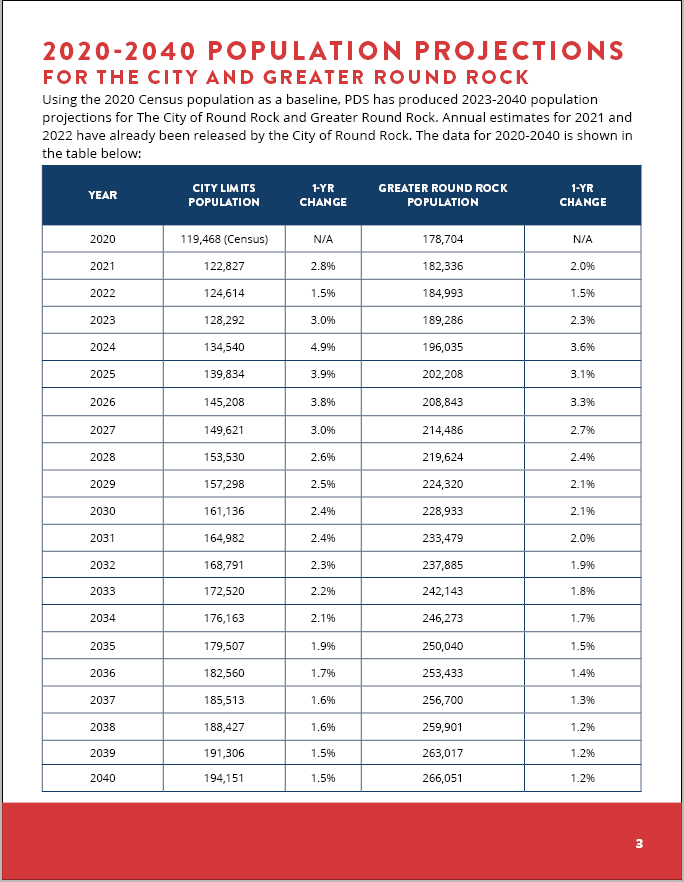
March 10, 2022
An informational document about residential options for the city’s three downtown mixed-use districts is now available for download. Round Rock 2030 includes implementation strategies to facilitate a mixture of residential development types throughout the city. Specifically for downtown, the goal is to develop a minimum of 1,000 dwelling units within one-quarter mile of Main Street. The document serves to provide a summary of permitted residential uses in the three mixed-use districts in downtown.
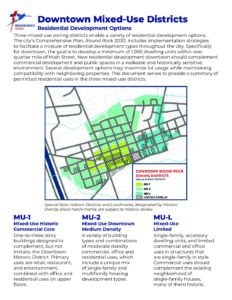
November 18, 2021
The Round Rock 2030 Annual Report for 2020-2021 is now available for download. This report serves as an annual update on progress on the implementation of Round Rock 2030’s vision and policies. Implementation progress from adoption (June 24, 2020) to the end of FY2021 (September 30, 2021).
The Annual Report was presented to City Council on November 18, 2021. The presentation video is available on Round Rock Replay.
November 3, 2021
The City of Round Rock was awarded two of the state’s highest planning honors today at the 2021 Texas Annual Planning Conference in Fort Worth.
The American Planning Association (APA) Texas Chapter named Round Rock 2030, the City’s comprehensive plan, the best Comprehensive Plan in the state. Round Rock also received the Community of the Year Award.
“Round Rock 2030 is an original and visionary comprehensive plan that was written in-house and reflects the wants and needs of a rapidly growing community,” according to the organization’s website. “In particular, the development of the plan’s ‘Vision and Policies’ section broadened citizens’ understanding of planning principles.”
The two-year-long public engagement process resulted in 12 planning policies that include actions to implement the Round Rock 2030 vision, which is that Round Rock is a safe, desirable, family-oriented community that balances progress and prosperity with its history, by prioritizing quality of life, mobility, economic development and thoughtful land use planning.
“To receive this statewide recognition, for both our Comprehensive Plan and our overall community planning efforts, speaks to the quality and dedication of the planning professionals we have here in Round Rock,” Director of Planning and Development Services Brad Wiseman said. “In terms of public engagement, Round Rock 2030 was above and beyond any major planning initiative we’ve done in the past, and helps ensure that our community will continue to be a great place to live for decades to come. I would like to thank all of our staff, the Planning & Zoning Commission, City Council, and the countless residents that took time out of their busy schedules to engage in this lengthy planning process. It is important to note that our staff was able to complete this plan without the assistance of outside consultants, and it would not have been possible without the tireless efforts of Susan Brennan, Joelle Jordan and Nicole Haggerty.”
The Awards Selection Committee evaluated nominees based on originality and innovation, engagement, implementation and effectiveness, quality and promotion of planning. The City received the Community of the Year award, due in part, to the community’s commitment to strong planning principles as embodied in Round Rock 2030.
“These awards provide a great reminder to all Texans of the value sound planning practices bring in helping communities create unique places for everyone that many people love,” said Chance Sparks, AICP, President of APA-Texas. “Many of these planning efforts took place in the midst of a pandemic, and serve as great examples of the agility and innovation taking place at the local level to respond to the challenges revealed by the pandemic. They are a tribute to the alignment and dedication of communities, staff and elected & appointed officials in enhancing the quality of life of everyone.”
For more information, visit texas.planning.org.
October 1, 2021
The 2020 Census Release Report is now available for download. This report provides 2020 Census data compared to 2010 Census data for Round Rock. The Census establishes a baseline for the city’s population estimates and projections.
While data for Round Rock from the latest U.S. Census confirms that the city continues to be fast-growing, a closer look in the City’s recent Census Release Report reveals other interesting trends in the city’s demographic makeup.
Round Rock’s official population count totaled 119,468 for the 2020 Census, an increase of 19.6% over its previously recorded population of 99,887 in the 2010 Census.
Like many cities in Texas, Round Rock is growing more racially diverse; while the number of Round Rock residents who responded that they are only one race has decreased from 96.2% of the total population to 82.9% over the last 10 years, the number of people who are of two or more races increased from 3.8% to 17.1%. For the 2020 Census, the U.S. Census Bureau made improvements to the questions on race and Hispanic origin, also known as ethnicity. Almost one-third of Round Rock’s population self-identified as Hispanic or Latino in the 2020 Census.
In 2020, adults over the age of 18 make up a larger share of Round Rock’s total population than in 2010. The number of people under the age of 18 remained constant over the last decade, even as the city’s population grew, while the number of people over the age of 18 grew by 19,393.
The City of Round Rock also closely tracks housing and economic indicators to inform planning decisions. Over the last 10 years, 8,621 housing units were added, which included more variety of housing unit types, such as single-family common lot and higher density multifamily developments. Vacant housing units decreased from 5.8% of total inventory to 5%, demonstrating that the additional units were necessary to meet housing demand.
The Planning and Development Services Department generates monthly population estimates based on housing units, occupancy, and household size using the most recent Decennial Census as a baseline. For more information, visit the City’s Demographic and Census Information page.

